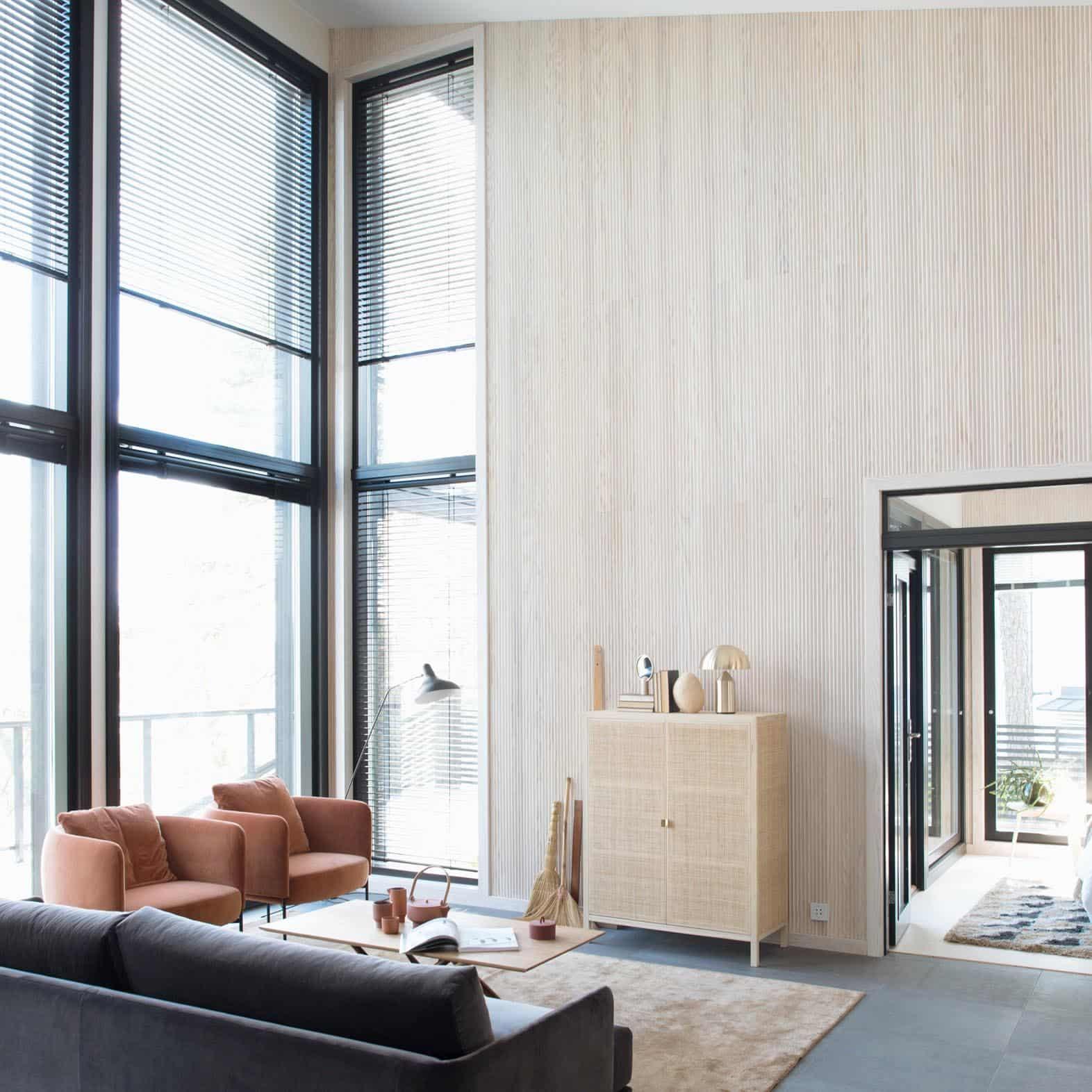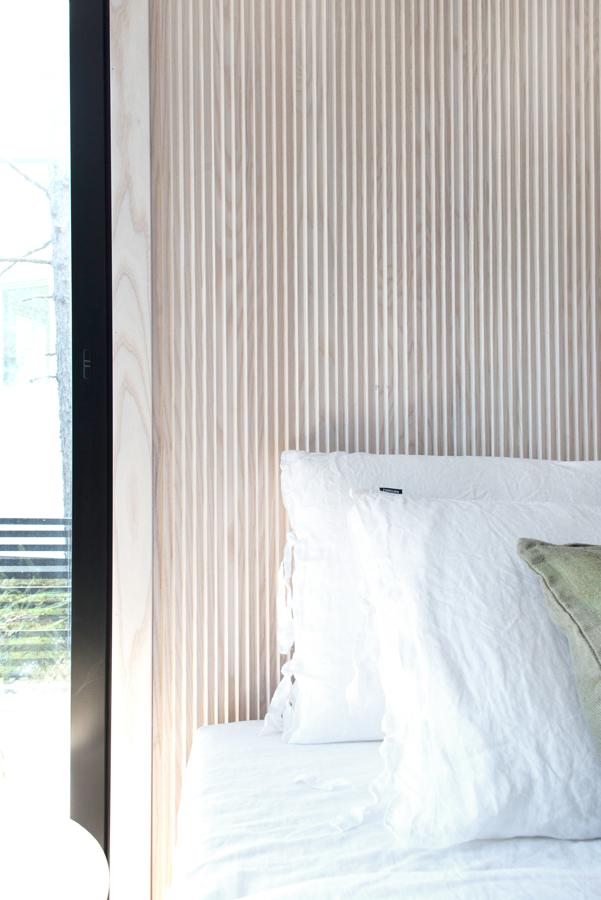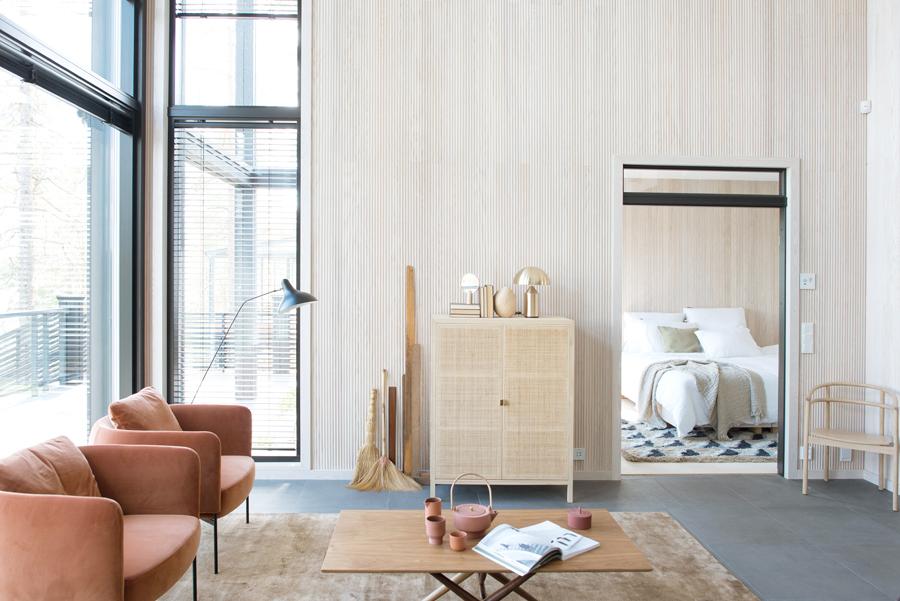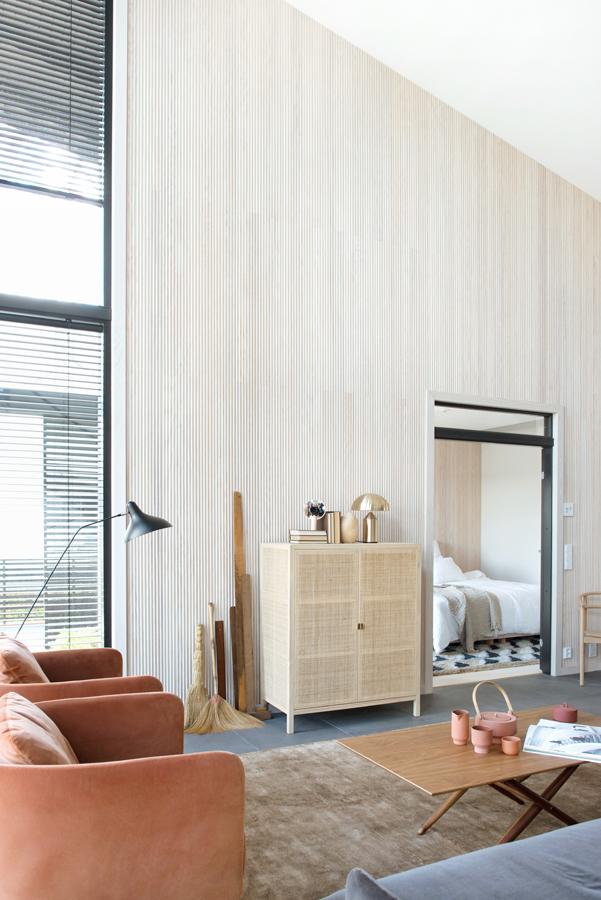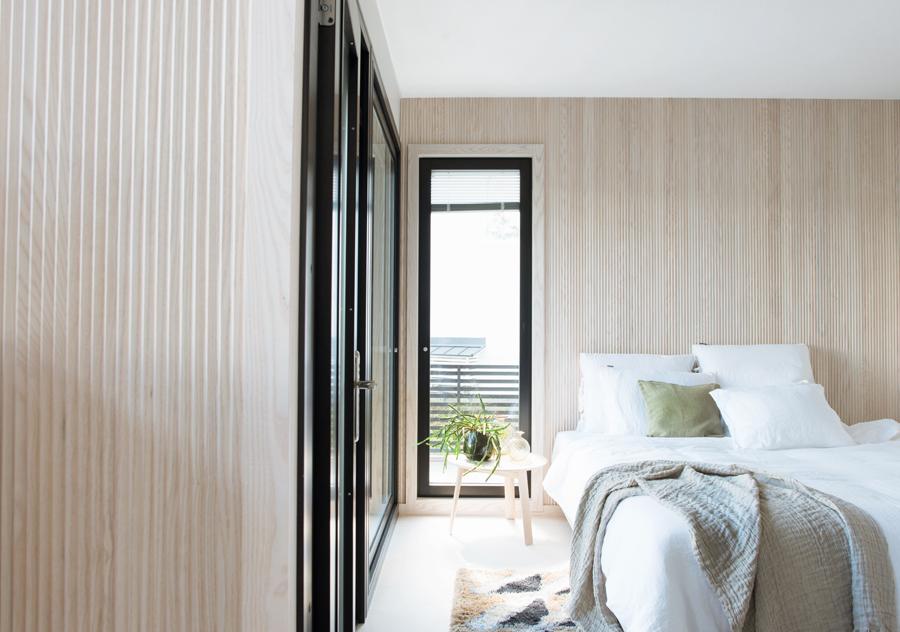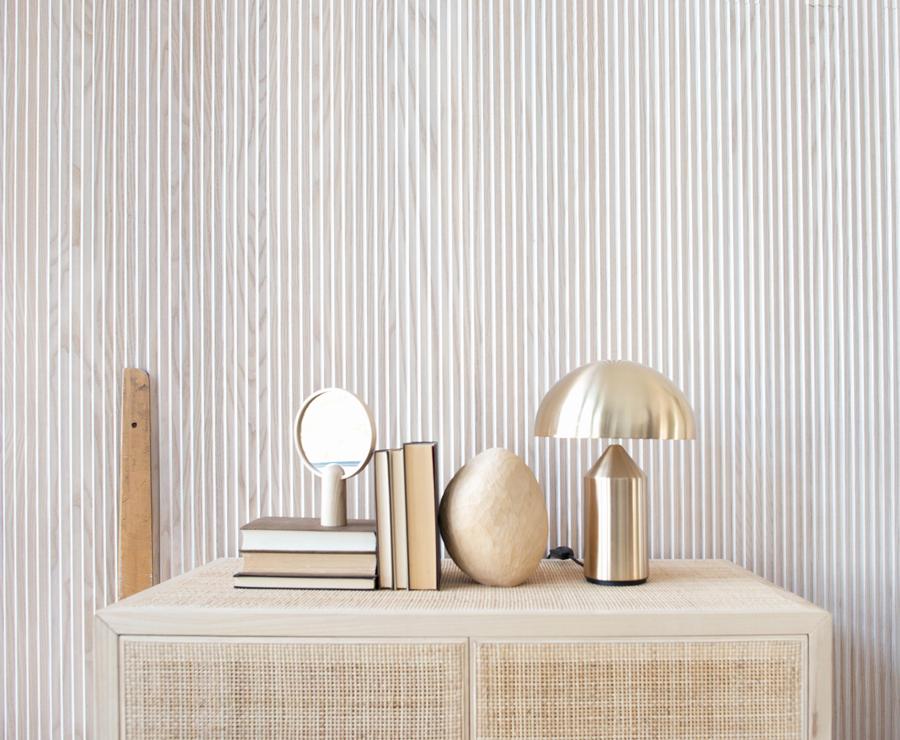In many ways, buying wood panels pre-finished is a sensible and sustainable choice. Pre-painted or waxed panels add a touch of class and can be used to quickly decorate wall and ceiling surfaces. Wood is also known to have positive effects on indoor air quality.
Properly selected surface treatment methods can improve the durability of wood in everyday use and preserve its breathability. An industrially treated surface is about three times cheaper than hand-painting. The most commonly used treatment options for wood in Finland are varnishing, waxing, staining, and coating.
Translucent or masking?
The options in terms of translucency and colour shades are almost limitless. The wood can be opaque, which hides the natural surface of the wood beneath the paint. Waxing and varnishing leave the beautiful grain pattern of the wood visible. The breathability of the wood can be preserved by using water-based finishes. Water repellents do not make the surface completely waterproof, but allow moisture to pass into and out of the wood. Thus, they are always a healthy and safe choice for wood treatment. Whether the wood surface is opaque or translucent, waterborne agents preserve the wood's natural properties as a moisture balancer in the indoor environment.
When the natural look of the wood is to be preserved, a combination of varnish and sealer or waxing alone can be used. Varnishing gives the wood a glossy finish, while waxed wood has a more matt surface. Sauna panels and decking typically use a waxy sauna finish, which allows the wood's texture to stand out beautifully, but the treatment protects the material from moisture.
Dulling is used when you simply want to affect the surface colour of the wood. The varnish itself does not protect the wood from moisture and UV rays from the sun, but must always be topped with a layer of varnish as a protective agent. There is value in leaving the wood surface exposed, as the latest research shows that the most natural wood material has the greatest health benefits, for example in reducing stress-induced blood pressure and heart rate increases.
A cost-effective and sustainable part of everyday life
A prefabricated industrially finished wood panel is always the most cost-effective option, considering both the cost of the material and the time spent. A prefinished surface is about three times cheaper than hand-painting. In addition, the end result is guaranteed to be neat, smooth and the desired shade.
For a successful surface treatment, the installation and construction of the wood also play an important role. For example, attention must be paid to air circulation and nailing. Especially in damp areas, it is important to leave a ventilation gap to allow the panels to dry out after exposure to moisture. Concealed fixing also protects the wood from moisture, as the nail heads are not visible on the surface of the wood and water cannot damage the wood from the edges of the nail heads.
When choosing surface materials for your home, it is important to consider the structural functionality required by the space. If you want a wooden surface behind a sink or stove, for example, where wood is exposed to splashes and dirt, consider covering the wooden surface with glass, for example. This makes the surface easy to keep clean and keeps the beautiful wood material looking good underneath. Buying the wood product pre-finished leaves only the installation step.
When a treated wood surface requires maintenance, it's quick and easy. The maintenance required for a surface-treated product depends entirely on the space in which the product is placed. A wood product placed in a living room or bedroom requires little maintenance compared to a product placed in a damp area, for example. In general, the maintenance of a wooden surface is simple and can be done by everyone. Annual wood care procedures vary from vacuuming to wiping with soapy water, so it is important to check the maintenance instructions for each product. Wooden surfaces are also easy to repair compared to wallpaper or wood-based materials such as mdf. If a wooden surface is dented, the damaged area can be easily sanded and painted to hide it.
The treated surface itself does not deteriorate, but the wood underneath it lives. For example, UV radiation from sunlight affects the colour of wood surfaces over time. Untreated wood ages the most and stained wood does not age at all. In audible tones, wood is prevented from ageing by the use of effective UV blockers. Wood is also characterised by moisture variation according to indoor humidity conditions. A water-repellent coating does not reduce the positive properties of the wood, but its indoor climate-enhancing properties are maintained. When the indoor air is dry, wood releases moisture, and when the indoor air is humid, it absorbs moisture. The end result is fresh indoor air around the clock.
Wood surface treatment is environmentally friendly
Wood can be surface treated with water-based or solvent-based products. Wood treated with a waterborne preservative allows water vapour to pass through and retains its moisture balancing effect. Solvent-based paints and varnishes, on the other hand, do not allow the wood to breathe. Another important difference between water-based and solvent-based paints and varnishes is the flexibility of the topcoat. Water-based paints, waxes and varnishes will flex and bend with the wood, whereas solvent-based paints will crack over time on curved wood surfaces.
Waterborne surface treatment products are healthy and safe to use.
A good indoor climate requires that indoor air issues are taken into account at all stages of design, construction and operation. Among many other factors, the final quality of the indoor environment is influenced by the construction materials used. Wood itself is a pure natural material. In Tikkurila, 190 people work every year on product development, making possible the finest wood surfaces without compromising product safety.
Expert in the article: Jussi Kemppi, Tikkurila Wood Products Industry.
